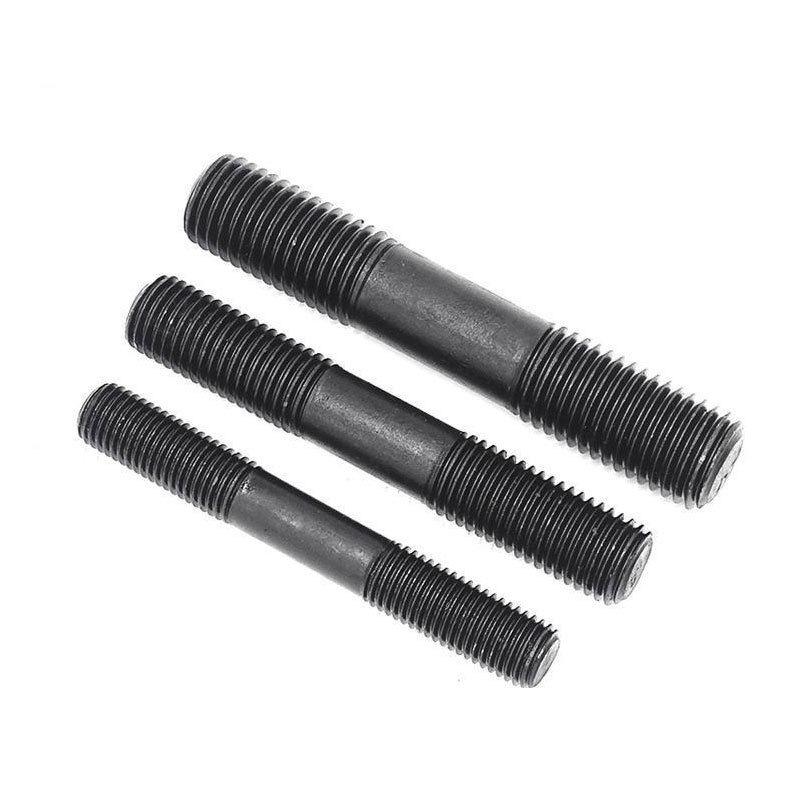

Understanding Stud Bolts According to DIN 976 Standards for Reliable Fastening Solutions
জুলাই . 21, 2024 02:32 Back to list
Understanding Stud Bolts According to DIN 976 Standards for Reliable Fastening Solutions
Understanding Stud Bolts A Focus on DIN 976 Standards
Stud bolts are critical fasteners widely used in various industries, particularly in construction, automotive, and marine applications. Among the different standards governing stud bolts, DIN 976 stands out as a significant specification that ensures the quality and reliability of these vital components.
What is a Stud Bolt?
A stud bolt is a long rod with threads on both ends and a smooth shaft in the middle. Unlike traditional bolts that have a head, stud bolts are primarily used in applications requiring the attachment of two components with the help of nuts. This design allows for greater flexibility, especially in high-stress environments where traditional bolts might not provide sufficient holding capacity. The absence of a head means that more extensive fastening options are available, as both ends of the stud can be accessed from either side of the component being fastened.
Importance of DIN Standards
The Deutsches Institut für Normung (DIN) is a renowned institution that develops and publishes standards pertaining to numerous engineering fields, including fastenings. The DIN 976 standard specifically addresses the dimensions, material properties, and mechanical requirements for stud bolts, ensuring they can withstand the stresses and strains they may encounter in use.
Adhering to DIN 976 standards ensures interchangeability and reliability across different manufacturing contexts. This level of standardization implies that engineers and manufacturers can integrate stud bolts into their designs with confidence, knowing they will fit and function as intended.
Material Characteristics
Stud bolts constructed according to DIN 976 can be made from various materials, including carbon steel, stainless steel, and alloy steel, among others. The choice of material often depends on the specific application and environmental conditions, such as exposure to corrosive elements or extreme temperatures. The standard outlines the necessary mechanical properties like tensile strength, yield strength, and elongation, essential for ensuring that the stud bolts can handle the intended loads without failure.
stud bolt din 976

Dimensions and Thread Types
DIN 976 provides detailed specifications regarding the dimensions and thread types of stud bolts. The standard specifies various diameters and lengths, allowing engineers to select the appropriate stud bolt for their specific applications. The most common thread types conforming to this standard include metric coarse and fine threads, ensuring compatibility with a wide array of nuts and other fasteners.
The dimensioning also accounts for the ability to apply adequate torque, which is crucial for achieving the desired clamping force. Understanding the torque specifications is essential for ensuring that the stud bolts are tightened to the appropriate levels, preventing loosening during operation and securing the integrity of the assembly.
Applications in Industry
Stud bolts are used extensively across various industries. In the oil and gas sectors, they secure pipes and flanges, providing vital leak-proof seals under high-pressure conditions. In the construction industry, they are essential for bolting steel beams and girders together, forming the backbone of structures ranging from bridges to towering skyscrapers.
Furthermore, in marine applications, stud bolts must resist corrosion and fatigue due to the harsh environments at sea. As such, adhering to DIN 976’s standards becomes imperative to ensure long-lasting functionality and safety.
Conclusion
In conclusion, stud bolts complying with DIN 976 standards play an indispensable role in diverse engineering applications. Their robust design, coupled with stringent material and dimensional specifications, makes them ideal for various high-stress environments. As industries continue to evolve, understanding and utilizing these standards will remain crucial for engineers and manufacturers aiming to achieve reliability and quality in their fasteners. By adhering to these standards, they not only enhance the structural integrity of their designs but also contribute to improved safety and performance in their respective fields.
Latest news
-
Premium Fasteners Manufacturer | AI-Driven Solutions
NewsAug.01,2025
-
Hot Dip Galvanized Bolts - Hebei Longze | High Strength, Corrosion Resistance
NewsAug.01,2025
-
High-Strength Hot Dip Galvanized Bolts - LongZe | Corrosion Resistance, Custom Sizes
NewsAug.01,2025
-
Best Self Tapping Screws for Drywall - Fast & Secure Installation
NewsJul.31,2025
-
High-Strength Hot Dip Galvanized Bolts-Hebei Longze|Corrosion Resistance&Customization
NewsJul.31,2025
-
Hot Dip Galvanized Bolts-Hebei Longze Metal Products|Corrosion Resistance&High Strength
NewsJul.31,2025

